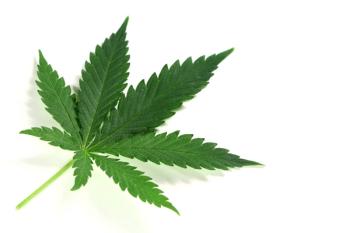
Cannabis Science and Technology
- September 2022
- Volume 5
- Issue 7
- Pages: 23-27
Nonclinical In Vitro Safety Assessment Summary of Hemp Derived (R/S)-Hexahydrocannabinol ((R/S)-HHC)
In the work presented here, the authors pursue a more detailed understanding of the naturally rare occurring cannabinoid analogue, hexahydrocannabinol (HHC), by exploring the safety profile using a third-party lab to produce preclinical in vitro safety profile data. The purpose of these studies is to demonstrate HHC as a safe cannabinoid for potential human consumption.
In pursuit of a more detailed understanding of the naturally rare occurring cannabinoid analogue, hexahydrocannabinol (HHC), safety becomes a question when possible human consumption is introduced. We explore the safety profile of HHC, using a third-party lab to produce preclinical in vitro safety profile data on the cyto-toxicity of cardiomyocytes through the human ether-à-go-go-related gene (or the human ether related gene) (hERG), hepatocytes, and lung fibroblasts. hERG (1) is a gene that codes for a protein known as Kv11.1, the alpha subunit of a potassium ion channel. This ion channel (simply denoted as “hERG”) is best known for its contribution to the electrical activity of the heart: the hERG channel mediates the repolarizing current in the cardiac action potential, which helps coordinate the heart’s beating. Preceding studies of HHC, neglect the base scaffold structure of HHC (2), and test on synthetic derivatives, and various analogs. The purpose of these studies is to demonstrate HHC as a safe cannabinoid for potential human consumption. The preclinical assessments of HHC did not indicate any cardiac safety issues via data from a hERG (3) fast patch assay. HHC also demonstrated no cytotoxicity in the plated human liver hepatocyte cell viability assay. HHC, according to in vitro data produced potential cytotoxic effects in human lung fibroblasts when exceeding 10 mm concentrations, when reviewing the data, safe possible human consumption is feasible without complications.
The use of cannabinoids dates to ancient China around 2500 BC (4). These substances, which are found in nature, have been used for recreational and medicinal purposes: to alleviate pain (5), gastrointestinal (GI) issues (6), multiple sclerosis (7), anxiety (8), cancer (9), and more. The explosion of cannabis usage around the world caused an increasing number of studies to be conducted to determine the therapeutic benefits of these compounds, in the fight against some of the most debilitating and chronic diseases. Cannabis sativa L. produces more than 120 minor cannabinoids (10).
Current and relevant studies of hexahydrocannabinol (HHC) (11) involve substituted groups such as alcohols and carbonyls, which affect the target and binding affinities and can pose risks that are not widely studied, while we focus purely on HHC which has a methyl at the C9 position rather than other functional groups. Since this cannabinoid (HHC) is found naturally in trace amounts (12,13), it can be extracted from hemp and cannabis via the conventional isolation methods, but this is an inefficient and costly process. Our group has developed an efficient and robust way to synthesize and isolate (R/S)-HHC starting from D8 and D9-tetrahydrocannabinol
(THC) while also focusing on the safety study of this rare cannabinoid, including but not limited to cell viability and cytotoxicity studies.
Materials and Methods
Preclinical in vitro studies were performed for (R/S)- HHC. The studies were conducted at Charles River Laboratories (cell viability); Cleveland, OH (hERG); and Skokie, IL (Ames). All studies were exploratory and carried out under a non-good laboratory practice (GLP) environment. All procedures carried out in the laboratory were reviewed and approved by the institutional authorities.
Microbial Mutagenesis
The Ames test is one of the most frequently applied tests in toxicology. Almost all new pharmaceutical substances and chemicals used in industry are tested by this assay. The Salmonella typhimurium reverse mutation assay is a bacterial short-term test for identification of carcinogens using mutagenicity in bacteria as an endpoint. The Ames test detects mutations in a gene of a histidine-requiring a bacterial strain that produces a histidine-independent strain. Both direct and indirect (for example, chemicals that require metabolic activation) mutagens can be identified using the Ames test.
Evaluation of hERG Current Using Patch Clamp Analysis
One of the most frequent adverse side effects, leading to the failure of drugs, is cardiac arrhythmias. Such failure is mostly related to the capacity of the drug to inhibit the hERG cardiac potassium channel. Inhibition of the hERG current causes QT interval prolongation resulting in potentially fatal ventricular tachyarrhythmia called Torsade de Pointes (note: the QT interval is the section on the electrocardiogram [ECG] that represents the time it takes for the electrical system to fire an impulse through the ventricles and then recharge). To evaluate anticipated cardiovascular effects, early evaluation of hERG toxicity has been strongly recommended, for instance by the regulatory agencies such as the US Food and Drug Administration (FDA) and European Medicines Agency (EMA).
Cell Viability Assay Using Human Lung Fibroblasts
The cell viability assay is used to measure cellular metabolic activity as an indicator of cell viability, proliferation, and cytotoxicity. The CellTiter-Glo Luminescent Cell Viability Assay is a homogeneous method of determining the number of viable cells in culture based on quantitation of the adenosine triphosphate (ATP) present, an indicator of metabolically active cells.
Cell Viability Assay Using Plated Human Hepatocytes
Similar to the lung fibroblasts, the highly sensitive ATP CellTiter-Glo Luminescent Cell Viability Assay was used to determine the potential of in vitro liver toxicity of (R/S)-HHC. The test compound ([R/S]-HHC) and the control (Terfenadine) were tested at a concentration range of 0.05 to 50.0 µM for cell viability (cytotoxicity) in human hepatocytes.
Experimental
(R/S)-HHC
A 5 L reactor equipped with a reflux condenser and an addition funnel was purged with argon for 15 min. Pd/C (10% by mass) was added to the reaction slowly using a powder funnel under argon. The reactor was then purged with argon for 15 min. Ethanol (200 mL) was added slowly to avoid sparking the solvent. A mixture of D8- and D9-THC (100 g, 318 mmol) was dissolved in ethanol (100 mL). The solution was added to the reactor under argon and purged for 15 min. Afterwards, the atmosphere of argon was stopped, and an atmosphere of hydrogen (1 bar) was introduced. The reaction was then stirred at 25 °C until completion by high performance liquid chromatography (HPLC). Upon completion, the reaction was purged with argon for 20 min. The reaction mixture was filtered over 1–3-µm filter paper on a Buchner funnel and then the solution was concentrated in vacuo. The crude oil is then dissolved in hexane and purified over silica (0–5% EtOAc). The fractions of interest were concentrated in vacuo and then distilled to afford a colorless to light yellow oil with three compounds of similar m/z ratios. HPLC (C18): 7.940 min, 8.141 min, 8.395 min LRMS: [M+1]+ 317. 1H NMR (500 MHz, CD3CN) δ 0.89, 0.93, 1.18, 1.30, 1.43, 1.53, 1.62, 2.06, 2.38, 2.42, 2.60, 3.06, 6.08, 6.68.
The final product was isolated and 99.9 % (R/S)-HHC is shown in Figure 1. In addition, 1H nuclear magnetic resonance (NMR) and gas chromatography–mass spectrometry (GC–MS) analysis were preformed to determine the structure of (R/S)-HHC, as illustrated in Figures 2 and 3, respectively.
Results and Discussion
Genotoxicity Assay
Microbial Mutagenesis
Potential of (R/S)-HHC to induce reversion mutations in Salmonella typhimurium strains TA98, TA100, TA1535, and TA1537 and E. coli strain WP2 uvrA both with and without metabolic activation was evaluated. The plate incorporation screen for (R/S)-HHC was tested in duplicate with strains TA98, TA100, TA1535, TA1537, and WP2 uvrA in the presence and absence of a metabolic activation system (phenobarbital/5,6-benzoflavone-induced rat liver S9 microsomal fraction) at 1, 5, 10, 50, 100, 500, 1000, and 5000 µg/plate. The positive controls without metabolic activation were 2-nitrofluorene (TA98, 2.5 µg/plate), sodium azide (TA100 and TA1535, 1 µg/plate), ICR-191 Acridine (TA1537, 0.5 µg/plate), and 4 nitroquinoline N oxide (WP2 uvrA, 2.0 µg/plate). The positive control with metabolic activation for all strains was 2-aminoanthracene (2.5 µg/plate for Salmonella strains and 10 µg/plate for the E. coli strain). Dimethyl sulfoxide (DMSO) was used as the vehicle control.
(R/S)-Hexahydrocannabinol was not mutagenic, up to concentrations at ≥ 100 µg/plate in strain TA1535 without metabolic activation, and at ≥ 500 µg/plate in strains TA98, TA100, TA1537, and WP2 uvrA both with and without metabolic activation and in strain TA1535 with metabolic activation. The data from the Ames test suggests that (R/S)-HHC is a non-mutagenic compound.
In vitro Cardiac Safety Test
The effect of (R/S)-HHC on cloned hERG potassium channels (encoded by the KCNH2 gene and expressed in HEK293 cells) was examined using the QPatch II (Sophion Bioscience A/S), an automatic parallel patch clamp system. (R/S)-HHC was exposed to hERG at 6.25, 12.5, 25 and 50 µM (n ≥ 3). The duration of exposure to each test article concentration was a minimum of 3 min. The positive control data confirmed the sensitivity of the test systems to ion channel inhibition.
A summary of the results for (R/S)-HHC and the positive controls are shown in Table I. The data suggests that (R/S)-HHC does not block HERG-encoded channels expressed in HEK293 cells.
Cytotoxicity
(R/S)-HHC and the control (chlorpromazine) were tested at a nominal concentration range of 0.156 to 50.0 µM for cell viability (cytotoxicity) in human lung fibroblasts. In lung fibroblasts, the IC50 for (R/S)-HHC was 14.4 µM, and the percent cytotoxicity at 50 µM was 74.8%. The control, chlorpromazine, showed an IC50 value of 14.3 µM and 86.4% cytotoxicity at 50 µM. The data is summarized in Table II.
In human hepatocytes, (R/S)-HHC was non-cytotoxic and the IC50 for (R/S)-HHC was not measured, and the percent cytotoxicity at 50 µM was also very low (8.9%) because of its weak response. Terfenadine showed an IC50 value of 15.8 µM and 99.9% cytotoxicity at 50 µM. The data is summarized in Table III. The results indicated that there is no potential for hepatotoxicity, with very weak results in this plated human hepatocyte cell viability assay.
Conclusion
(R/S)-HHC derived from Colorado Chromatography Labs, using their patent pending technology demonstrated the following results: (R/S)-HHC was not mutagenic in in vitro genotoxic assay (Ames test). Preclinical assessments in the hERG patch clamp study did not indicate that (R/S)-HHC had any cardiac safety issues, which suggests that there does not appear to be an effect of (R/S)-HHC and QTc prolongation. The finding in the cell viability studies demonstrated potential cytotoxic effects of (R/S)-HHC in human lung fibroblasts at > 10 µM concentrations. (R/S)-HHC was not cytotoxic or damaging to human liver cells in in vitro human hepatocytes cell viability assay.
The future of this compound can be shifted since there was some slight toxicity to the lung fibroblasts, with directed remediation of molar concentrations as well as possible derivatizing of the future HHC compounds either the virgin HHC compound or derivatized compound could be used as a possible anti-tumor drug and treat certain lung cancers. With this initial cell viability and safety study we are providing evidence that although this compound was made in a laboratory setting, to increase the production of this rare cannabinoid that is difficult to extract, this compound is safe to consume, and can be opened in the world of research to see what effects and ailments that HHC can treat like other cannabinoids.
Acknowledgements
K.P.R. and W.C. gratefully acknowledge NMR spectroscopy support from Dr. Jin Hong at Custom NMR Services, Inc. from Woburn, MA and mass spectrometry support from Dr. Jasper van Heemst at KCA Laboratories in Nicholasville, KY.
References
- A. Garrido, A. Lepailleur, S.M. Mignani, P. Dallemagne, and C. Rochais, Eur. J. Med. Chem.195(112290), 112290 (2020).
https://doi.org/10.1016/j.ejmech.2020.112290 . - D.J. Harvey and N.K. Brown, Pharmacol. Biochem. Behav.40(3), 533–540 (1991).
https://doi.org/10.1016/0091-3057(91)90359-a . - T.A. Quinn and P. Kohl, Physiol. Rev.101(1), 37–92 (2021).
https://doi.org/10.1152/physrev.00036.2019 . - E.B. Russo, Chem. Biodivers 4, 1614–1648 (2007). doi:10.1002/cbdv.200790144.
- R. Abalo, G. Vera, A.E. López-Pérez, M. Martínez-Villaluenga, and M.I. Martín-Fontelles, The Gastrointestinal Pharmacology of Cannabinoids: Focus on Motility Pharmacology 90, 1–10 (2012).
https://doi.org/10.1159/000339072 . - M. Iskedjian, B. Bereza, A. Gordon, C. Piwko, and T.R. Einarson, Curr. Med. Res. Opin.23, 17–24 (2007).
- F.S. Guimaraes, T.M. Chiaretti, F.G. Graeff, and A.W. Zuardi, Psychopharmacology (Berl). 100, 558–559 (1990).
- L. De Petrocellis, D. Melck, A. Palmisano, T. Bisogno, C. Laezza, M. Bifulco, M., et al. “The Endogenous Cannabinoid Anandamide Inhibits Human Breast Cancer Cell Proliferation.” Proc. Natl. Acad. Sci. U S A. 95, 8375–8380 (1998). doi:10.1073/pnas.95.14.8375.
- K.B. Walsh, A.E. McKinney, and A.E. Holmes, Front. Pharmacol. 29, (2021).
https://doi.org/10.3389/fphar.2021.777804 . - Y.R. Lee and L. Xia, Tetrahedron Lett. 49, 3283 (2008).
- S.P. Nikas, S.O. Alapafuja, I. Papanastasiou, C.A. Paronis, V.G. Shukla, D.P. Papahatjis, A.L. Bowman, A. Halikhedkar, X. Han, and A. Makriyannis, Journal of Medicinal Chemistry 53(19), 6996–7010 (2010).
https://doi.org/10.1021/jm100641g . - J. Basas-Jaumandreu, and F.X.C. de las Heras, Planta Med. 86(5), 338-347 (2020).
- R. Adams, Marihuana Active Compounds, US Patent No 2,419,937, May 6, 1947.
About the Authors
Arianna C. Collins, Tesfay T. Tesfatsion, Giovanni A. Ramirez, Kyle P. Ray, and Westley Cruces are with Colorado Chromatography Labs in Parker, Colorado. Direct correspondence to:
How to Cite this Article:
A. Collins, T. Tesfastion, G. Ramirez, K. Ray, and W. Cruces, Cannabis Science and Technology® Vol. 5(7), 23-27 (2022).
Articles in this issue
over 3 years ago
Does Extract Type Make a Difference in Cannabis Edibles?over 3 years ago
Energy and Elements, Part I: Understanding Atomic Spectroscopyover 3 years ago
The Case for THCA and Other Minor CannabinoidsNewsletter
Unlock the latest breakthroughs in cannabis science—subscribe now to get expert insights, research, and industry updates delivered to your inbox.




